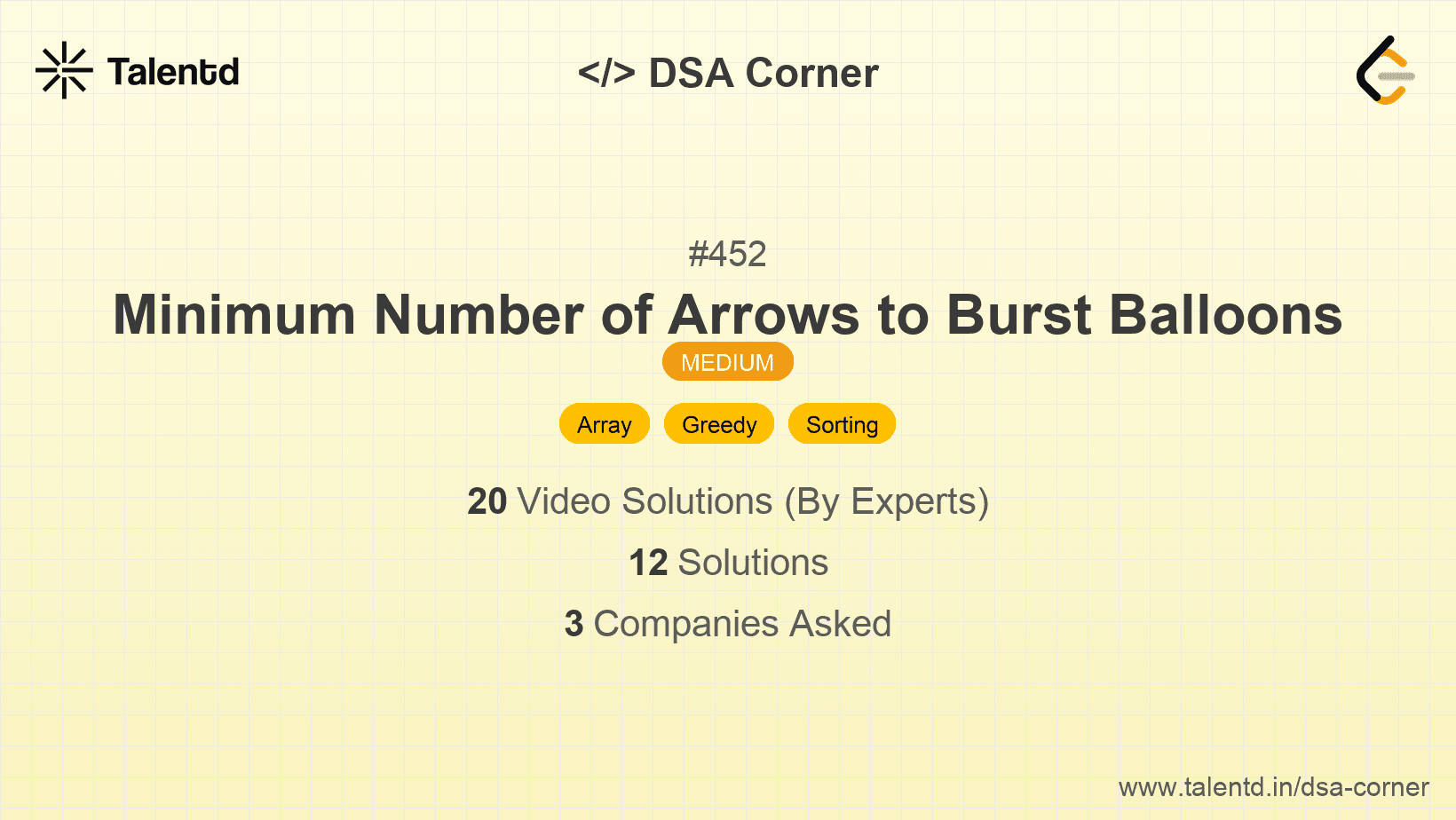
Sponsored
Sponsored
This approach involves sorting the balloons by their end points. Once sorted, we shoot an arrow at the end point of the first balloon, and then continue moving through the list, checking if subsequent balloons overlap with the burst of the arrow. If a balloon does not overlap, we need an additional arrow for it.
Time Complexity: O(n log n) due to the sorting step, where n is the number of balloons.
Space Complexity: O(1) if we ignore the space used for sorting.
1using System;
2
3public class MinimumArrows {
4 public static int FindMinArrows(int[][] points) {
5 if (points.Length == 0) return 0;
6 Array.Sort(points, (a, b) => a[1].CompareTo(b[1]));
7 int arrows = 1;
8 int end = points[0][1];
9 foreach (var point in points) {
10 if (point[0] > end) {
11 arrows++;
12 end = point[1];
13 }
14 }
15 return arrows;
16 }
17
18 public static void Main() {
19 int[][] points = new int[][] { new int[] {10, 16}, new int[] {2, 8}, new int[] {1, 6}, new int[] {7, 12} };
20 Console.WriteLine(FindMinArrows(points));
21 }
22}C# implementation uses the Array.Sort method with comparison on the end coordinates of the balloons to arrange them optimally for scanning.
Using a foreach loop, we check whether the start of the current balloon exceeds the last arrow's end location — prompting a new arrow.
This approach is adapted from the interval scheduling maximization pattern, where we attempt to find the maximum number of non-overlapping intervals. By sorting the intervals, we can focus on selecting the maximum number of compatible balloons.
Time Complexity: O(n log n) resulting from sorting operations.
Space Complexity: O(1) when sorting space considerations are minimized.
1
Java methods here benefit from leveraging Arrays.sort when sorting based on the starting x, allowing us to select non-overlapping maximal points.
The decision flow entrains continuing arrows for non-overlapping sections post each manageability test over existing xstart